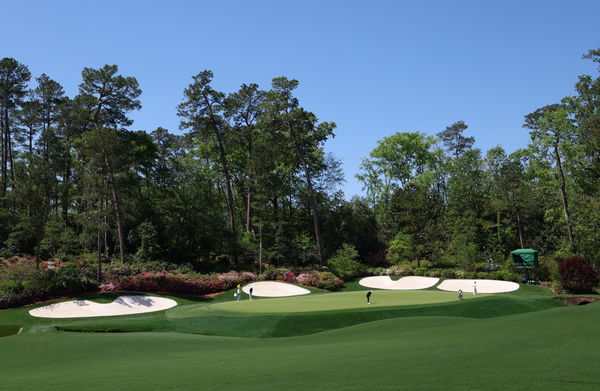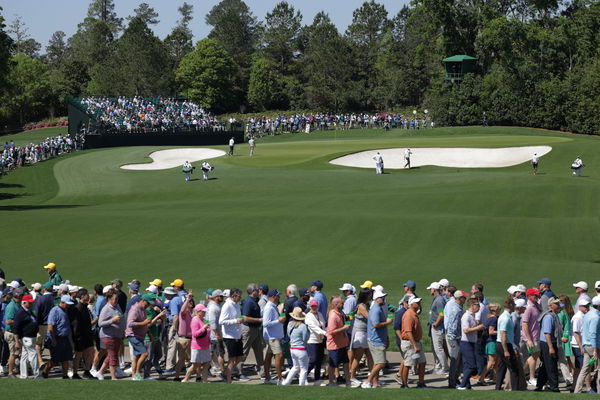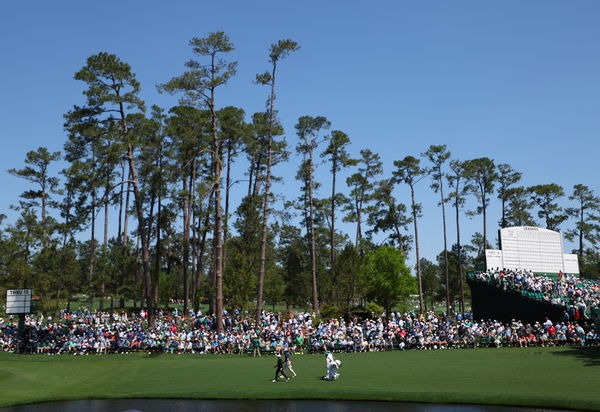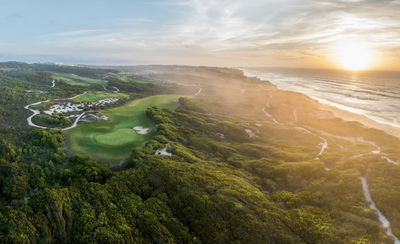The Masters: your hole-by-hole guide to golf's first major of the season at Augusta National
The Masters: your quick hole-by-hole guide to all 18 holes at famed Augusta National in Georgia.

The Masters is here and the very best golfers in the world are battling it out to win the famous Green Jacket at one of golf's most famous courses in the world, Augusta National.
After suffering catastrophic damage from Hurricane Helene last September, the Augusta National maintenance team have worked tirelessly to restore it to its best after the severe flooding and many fallen trees.
Despite the damage though, the home of The Masters is looking just as magnificent as we all remember it.
To help assist your viewing of the 2025 Masters Tournament, GolfMagic has put together a quick hole-by-hole guide of all 18 holes at Augusta National Golf Club.
Scroll below to check out where The Masters will be won and lost...

Augusta National: Hole by Hole Guide to The Masters
Rankings per The Masters website
1st - Tea Olive - par-4, 445 yards
The 1st hole at Augusta National is a slight dogleg right that plays uphill with a narrow tee shot and trouble right and left.
It’s a notoriously difficult start, one that 2023 champion Jon Rahm four-putted for a double-bogey in the first round.
Ernie Els memorably six-putted on this hole in the first round of the 2016 Masters.
Historical average: 4.24 (6)
2nd - Pink Dogwood - par-5, 585 yards
The 2nd hole is a dogleg left which is definitely reachable in two for the biggest hitters, and especially those try and send their ball down the left side of the fairway.
The green is guarded by large, deep bunkers, which offer some resistance to a relatively forgiving hole - pros see this as the first real chance for a birdie and a missed opportunity if they come away with par.
Historical average: 4.78 (16)
3rd - Flowering Peach - par-4, 350 yards
The 3rd is a very short par-4 with a green that slopes from right to left with a bunker on its left side.
The big hitters can definitely reach the dancefloor with their tee shots.
It provides another good scoring opportunity, but the green is very challenging with some huge run-offs short of the green.
Par isn't always the worst score here, but a lot of players will be hoping to walk away with a birdie.
Historical average: 4.08 (14)
4th - Flowering Crab Apple - par-3, 240 yards
The 4th hole is the first par-3 at Augusta National, and it's the longest one too.
Deceptive winds and two bunkers on the front right and left mean that it is no wonder why it is the third hardest hole on the course.
Players will take par and run here.
Historical average: 3.28 (3)

5th - Magnolia - par-4, 495 yards
This difficult par-4 is an uphill dogleg left that plays into a sloping green.
Tiger Woods’ advice for this hole: “Carry that crest that’s about 12 to 13 yards into the green, put the ball in the center, make your par and move on.”
The tee box was moved to make this hole 40 yards longer in 2019.
Historical average: 4.26 (5)
6th - Juniper - par-3, 180 yards
This beautiful par-3 features an elevated tee box with a large undulating green.
The green slopes from back to front and coupled with the elevation changes, knowing where to land for the pin position is vital.
Par is a fair score here.
Historical average: 3.14 (13)
7th - Pampas - par-4, 450 yards
A narrow tee shot needs to be executed perfectly to set up a comfortable approach shot to a green that is riddled with bunkers.
Players often focus their tee shots to the left of the fairway to play their second off a flat lie and give themselves the best chance of avoiding the five bunkers.
The best chance for players to make birdie here will likely be on Sunday when the pin is likely to be tucked in the front right.
Providing a player finds the fairway, he will be able use the slope in the middle of the green to send the ball back to the hole.
Par is a good score here, but plenty of birdies will be found during the week.
Historical average: 4.16 (10)

8th - Yellow Jasmine - par-5, 570 yards
This par-5 is only reachable for the very biggest hitters, and a fairway bunker forces an accurate drive.
More often than not players will be coming up just short of the green or within 100 yards of the green if they fail to find the fairway off the tee.
A narrow green is protected by a series of mounds; last year, it was the easiest hole with an average of 4.64.
There will be birdies galore here, and a sprinke of eagles too.
Historical average: 4.82 (15)
9th - Carolina Cherry - par-4, 460 yards
Well known for its back-to-front sloping green, the tricky 9th is a dogleg left with two bunkers on the left side of the green.
In 1996, Greg Norman didn’t carry his second shot far enough, seeing it roll back off the green, and the famous collapse was underway.
It's all about the approach shot here.
Historical average: 4.14 (12)
10th - Camellia - par-4, 495 yards
The par-4 10th is very often the hardest hole at Augusta National alongside the 11th.
Camellia sees a 100-foot drop from the tee to the green.
The dogleg-left 10th features a severely sloping right-to-left green, which is the major reason why it has been the hardest hole in Masters history.
Rory McIlroy memorably made a triple-bogey seven here when leading The Masters in 2011, and the wheels then well and truly fell off for him.
Some 14 years later, McIlroy just needs to win The Masters in order to complete the career grand slam.
Historical average: 4.30 (1)

11th - White Dogwood - par-4, 520 yards
The beginning of Amen Corner features the second hardest hole in Masters history.
The tee shot plays slightly downhill from left to right, and even for the best players in the world, it can be a struggle to reach the green in two.
Players will snap your hand off for four pars here during Masters week.
Historical average: 4.30 (2)
12th - Golden Bell - par-3, 155 yards
The 12th is one of the most famous holes in golf, and it is Augusta’s shortest par-3.
Varying winds can often make club selection difficult, and with Rae’s Creek snaking through the hole, it becomes pivotal for all players to land their shots on the green.
This hole has ruined many a Masters charge down the years, memorably Jordan Spieth in 2016 and most recently Francesco Molinari in 2019.
Tiger Woods incredibly racked up a 10 on this hole in 2020.
GolfMagic Editor Andy Roberts recently got to play the 12th hole, but in the Sky Sports Golf Studios alongside host Nick Dougherty.
Historical average: 3.27 (4)

13th - Azalea - par-5, 545 yards
The easiest hole on the golf course, and one that some players see as a great opportunity for a birdie and even an eagle.
It features a sweeping dogleg left with Rae’s Creek and four bunkers protecting the green.
Expect plenty of drama here, especially on Sunday.
Arguably the best hole at Augusta National.
Historical average: 4.77 (18)
14th - Chinese Fir - par-4, 440 yards
The only hole at Augusta that doesn’t feature a bunker is the 14th.
Despite its simplicity, the contours and sharp slopes from left to right make the green incredibly difficult to master.
A certain birdie chance if splitting the fairway, especially for the bombers who will be going in here with a wedge.
Historical average: 4.17 (8)
15th - Firethorn - par-5, 550 yards
If the winds are favourable, this par-5 is reachable in two shots.
But whilst it can be an opportunity to move up the leaderboard it does come with many risks.
It is covered with trees on either side of the fairway, and the green is protected by a pond and a bunker.
Sergio Garcia famously made an octuple-bogey 13 on this hole in 2018.
Historical average: 4.77 (17)
16th - Redbud - par-3, 170 yards
The 16th tee has seen many hole-in-ones in Masters history, mainly due to a friendly final-day pin position tucked away on the left side where the giant slope in the middle of the green helps the ball down to the pin.
It is protected by three bunkers and plays entirely over water.
This hole is the site of Woods’ famous “in your life!” chip-in from 2005.
Historical average: 3.14 (11)

17th - Nandina - par-4, 440 yards
The 17th is one of the tightest holes at Augusta and it's another uphill par-4 with a very important approach shot due to its two bunkers guarding the green.
As with many of the holes at Augusta National, it is key to avoid the trees to give yourself any chance of making the green in two.
Par is a solid score here for sure.
Historical average: 4.16 (9)
18th - Holly - par-4, 465 yards
A hole that has decided many a Masters Tournament.
The par-4 18th at Augusta National is an uphill dog-leg right with a narrow tee shot covered with trees and two bunkers on the left elbow.
Finding the fairway is a must if a player has any chance of making a birdie.
Missing the short stuff from the tee will likely prove a tough battle to make par.
Historical average: 4.23 (7)
What's your favourite hole at Augusta National? Head over to the GolfMagic social media channels and let us know.










